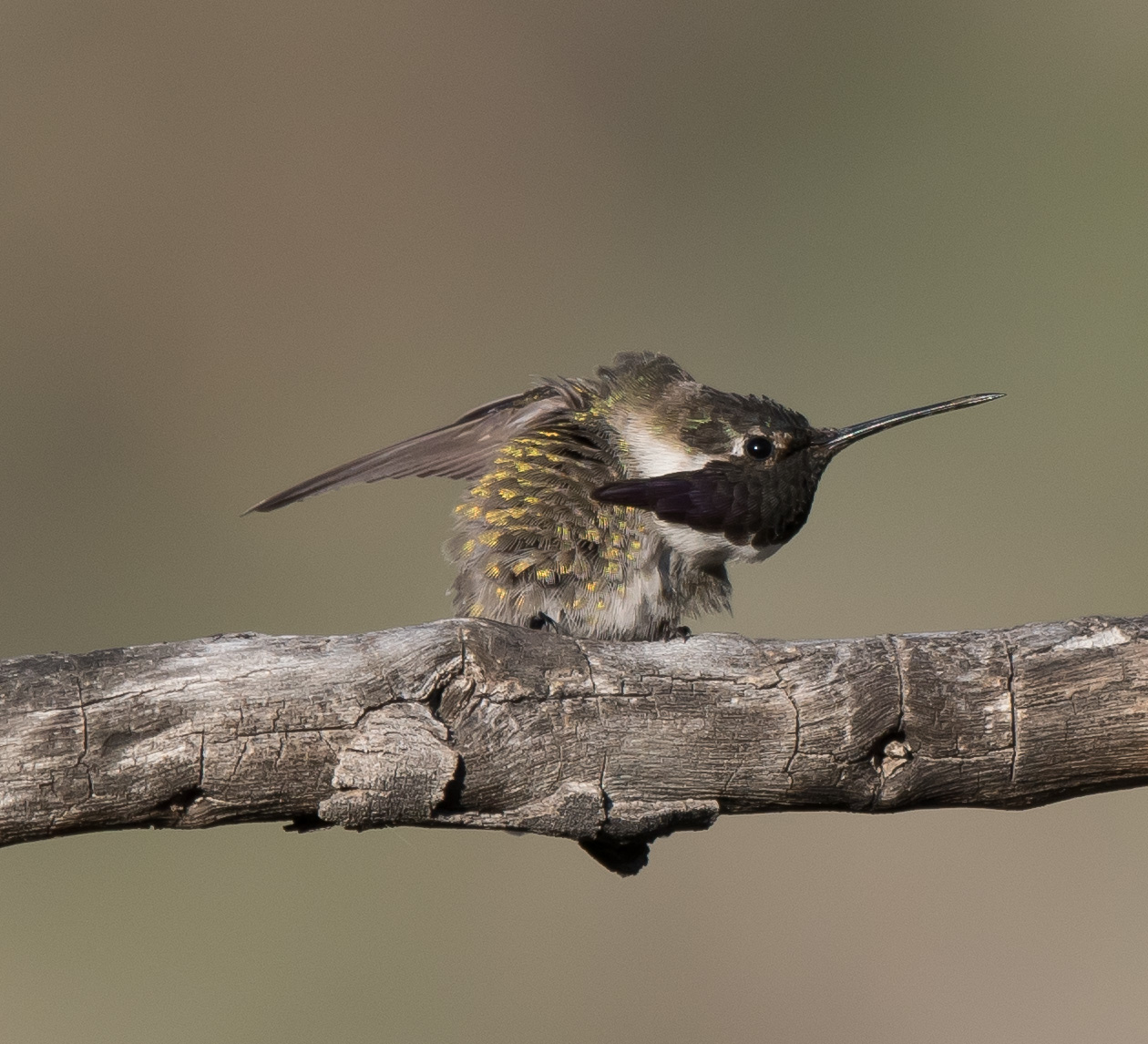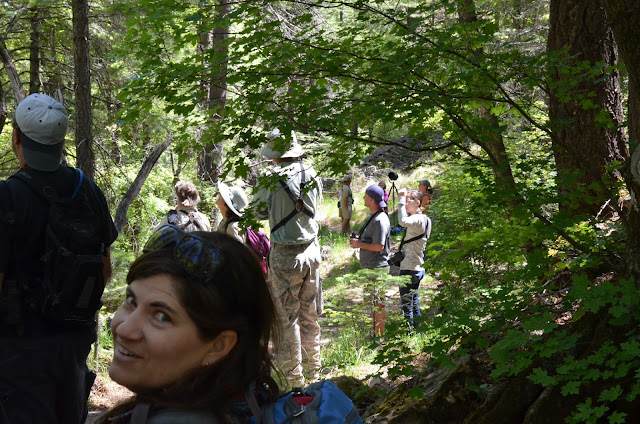The Friday after my return from a pelagic trip to San Diego, a very rare bird was reported in Ramsey Canyon in Arizona. A Tufted Flycatcher is an ABA (American Birding Association) code 5 bird which is one of the rarest birds to find in the United States and one was spotted in Ramsey Canyon not too far from Sierra Vista, AZ. I have heard various comments from several birders that this sighting is only the 7th record of this bird in the United States. I do recall one being reported at Boyce Thompson Arboretum about 3 years ago, but it was a one day wonder and was seen by very few birders.
Since the report came in on Friday, through a series of several text messages, 4 of us planned a crazy trip to head to Ramsey Canyon on Saturday to try our luck at locating this bird as it would be lifer for all 4 of us. I met up with Magill Weber and Tommy DeBardeleben very early on Saturday morning and we headed to Tucson and met up with Chris Rohrer to chase this bird. Since we arrived in the area almost an hour earlier than Ramsey Canyon's Visitor Center opened, we opted to drive to the campground at the end of Carr Canyon and then walk down the back way. I have never been to either one of these places before but after this trip, I know I want to check them out sometime in the future. This is absolutely stunning scenery and the birds were awesome and numerous. However our objective was the Tufted Flycatcher so we focused on getting to the spot where it had been seen the day before. An awesome 3 mile hike later and we came upon the spot and it was not hard to find as you can see by the following photos that others arrived before we did. Guess it was a popular spot in this very remote area that day! Gives you an idea how special this bird is.
The crowd that had already gathered.
Another awesome and respected birder, Andrew Core, was there and he reported that they had seen it about 45 minutes prior to our arrival. About 15 minutes after our arrival, Tommy was quick to exclaim that he just heard it and within a few seconds, this magnificent little bird flew in and gave almost all of us brief views of it. Unfortunately, it did not stay long and it disappeared again. But birders are a crazy lot, most of them stayed around hoping for another appearance and about an hour and 5 minutes later it reappeared and for those that hung around, this visit was much better and I was able to get better photos this time and those that missed it the first time got it on this visit.
Tufted Flycatcher
To this day the bird is still being seen and there is talk from several that claim to have seen a nest so if that is the case, this would most likely be a US breeding record. A very reliable and respected birder in our group insisted there are 2 of them as he heard two of them calling from different spots in the canyon. This is a species whose normal northernmost range is southern Sonora, Mexico where is breeds in highland forests. This is an awesome bird and one that I derived a great pleasure in seeing in the United States.
Another rare bird is nesting lower in Ramsey Canyon and many birders are 'flocking' there to add it to their life lists. And I was the only one of the 4 that had not seen this second bird before. Tommy, being the gentleman that he is, was so kind to offer to hike back up the way we came and drive the car to the visitor center at the Ramsey Canyon entrance while Magill, Chris, and I all headed on the down the trail towards the nesting site of this second species: the Flame-colored Tanager. This bird is only an ABA code 3 bird, but it is one that is absolutely stunning to look at.
The 3 of us started down the trail towards the visitor center and quickly discovered that this trail was also very steep and it would have a been a tough climb accessing the TUFL spot from this direction. Even the trek down was taxing on the legs. The Flame-colored Tanager has a confirmed nest and the staff from Ramsey Canyon has very wisely fenced off the area around the nest to give the birds and their nesting attempt some space. Nest is very well concealed and for the longest time the only view of this bird was that of the tail of the female on the nest. Not a view that I wanted to claim as a life bird. But with patience and perseverance, the male finally paid a visit to the area and we quickly got what photos we could. I later saw the female in a distance tree and got better looks at her as well.
Flame-colored Tanager
Getting life birds in Arizona is becoming more of a challenge for me, so getting 2 in one day was pretty amazing. At the end of the day we took a group photo and dubbed ourselves the 'Tufted Angels'. Birding with this group of people turns this hobby and passion into a lot of fun and is something that I cherish and look forward to as long as I can continue to keep up with them. Very happy that they agree to allow me to join in on their adventures!
'Tufted Angels'
Here a few other photos from the day of birding and some great fun with some great birding friends.
Arizona Sister Butterfly
Unidentified Butterfly
Unidentified Moth
Painted Redstart
Unidentified Butterfly - a Skipper of some sort
Yarrow's Spiny Lizard
And Chris, we have a very big adventure coming up this summer! Looking forward to adding dozens of new life birds to my list.































































